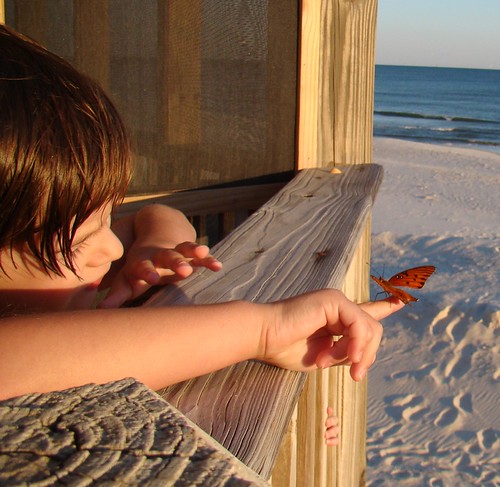When I tell people my title, Social Media Strategiest, many react with similar responses. "So, you are in marketing?" or "You market programs (Extension programs) through Facebook?"
Marketing and communications departments have been ordained the keeper of social media in most organizations. This means in many cases, marketing has tackled social media like they approach any marketing project with campaigns and broadcast dissemination.
Social media is not marketing, as the telegraph is not marketing, television is not marketing, and the telephone is not marketing. Marketing can exploit these tools but the tools do not belong exclusively to marketing.
Wikipedia uses a definition of social media from Kaplan and Haenlein. To understand this definition you have to understand the definition of Web 2.0 and user-generated content.
Social media includes web-based and mobile based technologies which are used to turn communication into interactive dialogue between organizations, communities, and individuals. Andreas Kaplan and Michael Haenlein define social media as "a group of Internet-based applications that build on the ideological and technological foundations of Web 2.0, and that allow the creation and exchange of user-generated content." Social media is ubiquitously accessible, and enabled by scalable communication techniques.
I rather like the definition that
Kevin Gamble and his colleagues used in an internal survey.
Social media refers to the various networked technologies that enable people to easily connect with other people for the purpose of communication, collaboration, learning, and the sharing of resources.
Terms "social business" and "social learning" are springing up, suggesting that the social part--the engagement--is important to other functions, such as customer service, sales, human resources, professional development, research, and development, to name a few. THREE CHEERS to those using social media for purposes other than marketing. Though there have been indications that social media is more than marketing for a long time, it seems that social tools are now getting some traction (though not enough) of being recognized for their value of social engagement across the organizational functions.
What are the possibilities when organizations understand and embrace the power of listening, sharing, cooperating, collaborating, and co-creating inside and outside the walled gardens--permeating the walls?
What are the possibilities when organizations fail to understand and embrace the power of social media throughout the organizations? The
risk of failing to see and respond is greater than the risk of trying and finding ways that make sense for the organization.
Social media can be anything that uses tools to share, cooperate, converse, collaborate, and co-create. Organizations and professionals still don't really have a clear direction in how to use social media. Unfortunately, most don't think beyond the big four--Facebook, YouTube, Twitter, and LinkedIn. There are many tools that allow for public and private sharing (just as the big four have elements of some privacy options).
There are many tools that allow intra-organizational sharing and collaboration within their walled gardens. In
Getting Beyond Simple Social, Thomas Vander Wal talks of five areas that he asks when organizations become stuck in using social business tools. Is getting stuck related to:
- The person
- How humans are social
- Cultural influences - or cross cultural issues
- Organizational constraints
- Problems with the tools / service
Vander Wal's list tells us that technology is only one of the five reasons why plateaus happen in organizations' social systems. Through his experience, he sees that "getting stuck" in using social systems usually happens for more than one reason. We have to think beyond the tool, yet the tool is important.
In an IBM study
"If You Don't Have a Social CEO, You're Going to be Less Competitive" (Forbes), it is predicted that in 5 years 57% of CEOs will be using social media. CEOs are beginning to understand that email and phone communications are no longer sufficient. Why? Because the knowledge and information shared on the phone and email are stopped within the tool. CEOs and others are beginning to understand that using social technologies help engage with customers, suppliers and employees which will enable organizations to be more adaptive and agile.
Those organizations that see social media as something that can reach across and bridge functions and find value in seeing their customers as part of their organizations are the ones that will find the quickest and greatest benefits. Organizations that see
innovation as a two way street will reap the benefits.
The tools, the media, are the enabling pieces. To capitalize and to benefit from social media is to understand that being social means engaging. Social generally means working in small circles. Communicating in large circles becomes much more akin to broadcasting. In most cases, it is through
small close circles in making information viral.
This post is not about being against marketing using social media. This post is that social media is a lot more than marketing. In the process of the engagement that occurs in social spaces, marketing is achieved. In a recent conversation with Karen Jeannette, she talked about sharing success stories on the
Master Gardener blog is more like public relations and marketing than education. This is great example where the focus is education and most posts are educational. but success stories are mostly marketing and public relations that have an opportunity to be educational. Often with educational posts and sharing marketing can be achieved.
Social tools allow for integration and cutting through silos in ways we have never had before. While reducing the silo effect is exciting, achieving this goal will happen when there is a mindset that allows for social integration and diversity.
 Sharing educational resources and discussing in the open can enhance both education and research efforts. Students and serious amateurs* contributing to content, ideas, and research can confirm that we are on the right track and that more diverse ideas can spread faster, speeding innovation and research.
Sharing educational resources and discussing in the open can enhance both education and research efforts. Students and serious amateurs* contributing to content, ideas, and research can confirm that we are on the right track and that more diverse ideas can spread faster, speeding innovation and research.

